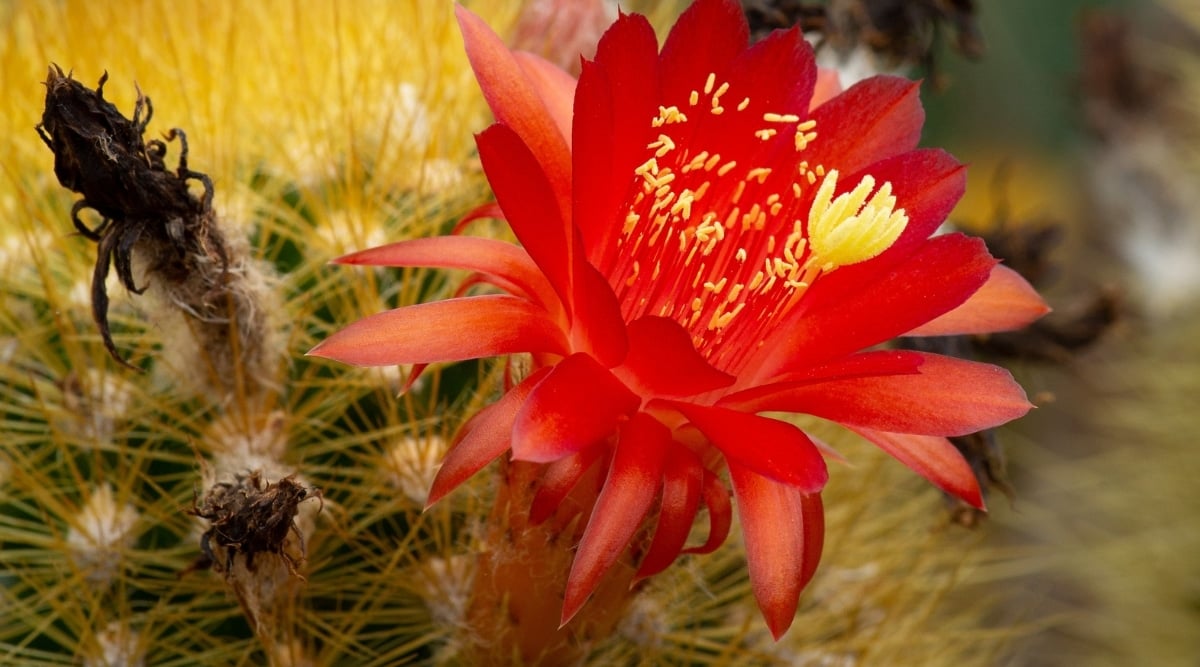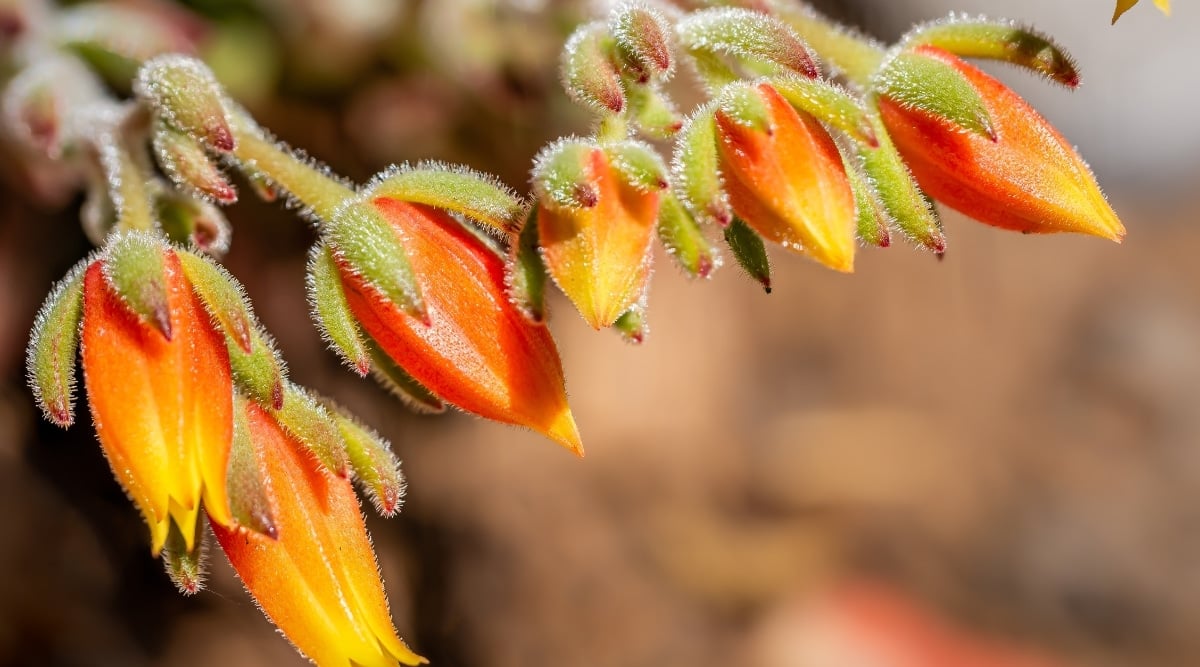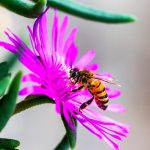On the hunt for succulents boasting stunning orange blossoms? With various shades of orange blooms to choose from, gardening guru Melissa Strauss shares her top picks for succulents flaunting magnificent orange flowers.
Orange, a lively color associated with warmth and joy, brings a zesty citrus tang and a cozy candlelit glow. It’s an excellent hue to brighten up gardens or floral displays and is a popular color for succulent blooms too.
If you’re in search of an orange flowering succulent, you’ve landed in the right spot! Succulents are low-maintenance, adding a touch of nature effortlessly to indoor or outdoor spaces. Besides, their unique appearance makes them great conversation starters in any garden.
Explore our curated selection of orange-blooming succulents that can enhance your living space with their vibrant hues.
Bitter Aloe

Scientific Name: Aloe ferox
- Bloom Time: Spring and Summer
- Geographical Location: South Africa
- Sun Exposure: Full Sun
- Plant Zone: 9-12
Known as Cape Aloe, Bitter Aloe resembles agave or century plants. Its gel has various cosmetic and medicinal uses. This large aloe variety can reach heights of 6’-9’ with a width of 3’-5’ at maturity.
Bitter Aloe showcases magnificent orange inflorescences attracting nectar-loving birds and insects. While it thrives outdoors, it’s sensitive to temperatures below 25°.
Candelabra Aloe

Scientific Name: Aloe Arborescens
- Bloom Time: Winter
- Geographical Location: South Africa
- Sun Exposure: Full Sun
- Plant Zone: 9-11
Candelabra Aloe, or Torch Aloe, is versatile in terms of soil conditions and water tolerance, thriving as a hedge in zones 9-11. This species produces clusters of vibrant reddish-orange flowers from rosette leaf clusters.
Cleistocactus Icosagonus

Scientific Name: Cleistocactus Icosagonus
- Bloom Time: Summer and Fall
- Geographical Location: Peru
- Sun Exposure: Full Sun
- Plant Zone:
Cleistocactus Icosagonus shines with its glowing yellow spines all year, forming elegant clusters of slender structures. This Peruvian native blooms bright orange tubes resembling small flames from summer to fall.
Lobivia Jajoiana

Scientific Name: Lobivia Jajoiana var. Nigrostoma
- Blooms in Summer
- Found in Argentina
- Requires Full Sun Exposure
- Suitable for Plant Zone 10
This small cactus hails from the rocky mountainous regions of Northern Argentina, typically growing solo, but sometimes forming small clusters. Ideal for pots, with long curving spines emanating from its surface.
The vibrant blooms come in shades of orange, yellow, and red, revealing intricate yellow stamens. Resembling poppies, these flowers adorn the plant’s apex, creating a stunning display.
Mountain Aloe

Scientific Name: Aloe Marlothii
- Blooms in Fall and Winter
- Native to South Africa
- Thrives in Full Sun
- Adaptable to Plant Zones 9-11
This majestic aloe plant can grow up to 10 feet tall, featuring gray-green leaves that wither gracefully, leaving a unique pattern at the base. Dotted with reddish spines, the plant blooms into a spectacle of golden-orange flowers during fall and winter.
Orange Crown Cactus

Scientific Name: Rebutia fiebrigii
- Flourishes in Spring and Summer
- Originally from Bolivia
- Requires Full to Partial Sun Exposure
- Ideal for Plant Zones 9-11
Rebutia fiebrigii, or Flame Crown, captivates with its round ball-like form. Native to the Bolivian Andes, these plants multiply into charming clusters over time, sporting vibrant orange flowers in late spring and summer.
Orange Flaming Katy

Scientific Name: Kalanchoe blossfeldiana ‘Orange’
- Blooms in Winter
- Indigenous to Madagascar
- Requires Bright Indirect Light
- Suited for Plant Zones 9-11
Kalanchoe blossfeldiana, originating from Madagascar, boasts various shapes and sizes. Loved for their vibrant blooms, these succulents are a delight to cultivate.
In winter, witness a colorful bloom of flowers that will brighten any space. Flaming Katy, also recognized as Kalanchoe Blossfeldiana, is a vibrant bloomer thriving under bright indirect sunlight. Its waxy, large green leaves house clusters of tiny orange flowers, creating a rosette petal arrangement. Encouraging deadheading prompts increased flower production and a steady bloom throughout different seasons with proper care. These plants are an ideal festive gift and promise to bring joy when placed near a sunny window.
Behold the Orange Ice Plant, scientifically known as Lampranthus aurantiacus. Boasting a spread of up to 5 feet, this succulent shrub, with its slender green leaves, makes for a stunning ground cover requiring minimal maintenance once established. In the spring, it bursts into bright orange blooms, attracting a myriad of butterflies with its nectar-rich flowers. Resilient to cold climates, this succulent is a versatile option for your garden.
Enter the realm of Orange Snowball, or Rebutia muscula, a charming cactus that adores sunlight, rewarding its caretakers with bountiful reddish-orange blooms come spring. With a mounding habit and fine spines giving it a frosted look, this cactus reproduces around the 2-year mark. Allowing the offsets to flourish creates a delightful cluster of snowballs, decked with fiery orange blooms featuring golden stamens. Periodic repotting in well-draining succulent soil ensures optimal performance of this beauty.
Welcome the Peanut Cactus, scientifically referred to as Echinopsis chamaecereus, a low-maintenance hanging plant with its cascading tendrils. Sporting finger-like structures covered in soft white hairs, this cactus thrives in full sun and requires modest watering. It blooms in spring and summer with deep rust-colored buds that sprout into exquisite orange flowers resembling straw flowers, adding an enchanting touch to any space.
Finally, let us introduce the Prickly Pear, scientifically labeled Opuntia rufida, commonly found in the southwest United States. This flatter, larger cactus blossoms outdoors during its flowering season, showcasing several blooms atop each cactus section. Enjoy the beauty of this plant in outdoor settings as it adds a touch of natural charm to your garden.
Opuntia Rufida
- Flowering Period: Spring
- Native Habitat: Texas, USA, and Mexico
- Sunlight Needs: Full Sun
- Hardiness Zone: 8-11
This cactus, with its attractive, edible fruit, can add a charming touch to a desert or rock garden. Its low maintenance nature makes it an ideal choice for gardeners who prefer minimal upkeep.
While lacking spines, this species is covered in red-brown glochids on its paddle-like segments, posing a threat to animals and humans alike.
During the spring, the Prickly Pear cactus blooms profusely atop its paddles. Starting as yellow, the flowers transition to a lovely apricot hue as they mature. The blooming period is followed by the emergence of appealing red fruits that are edible for both animals and humans.
Red Echeveria

Echeveria Pulv-Oliver
- Flowering Period: Spring and Summer
- Native Habitat: Mexico and North America
- Sunlight Needs: Full Sun
- Hardiness Zone: 9-11
This echeveria variant, whether indoors or outdoors, is exceptionally beautiful but seldom blooms as a houseplant. It thrives in bright, indirect light, safeguarding against becoming spindly in its quest for sunlight. The lush rosettes feature green leaves tipped with rich red hues, adorned with soft velvety hairs for protection from the sun and to conserve water. Its flowering season, usually in summer, sees the emergence of a slender spike, up to 1’ tall. The spike sprouts tiny buds that open consecutively, revealing vibrant coral-colored flowers with yellow interiors.
Woolly Rose

Echeveria ‘Doris Taylor’
- Flowering Period: Summer
- Native Habitat: Central America
- Sunlight Needs: Bright Indirect Sun
- Hardiness Zone: 9-11
This petite echeveria, named after its creator’s wife, garners its alias Wooly Rose from its appearance. Adorned with bright green rosettes of fleshy leaves covered in fine white downy hairs, it resembles a plush toy. Blossoming between spring and fall, predominantly in summer, it sprouts a tall spike lined with velvety bumps, culminating in a cluster of vivid orange buds. Upon blooming, these buds resemble small flames, boasting deep orange exteriors with vibrant yellow interiors – a captivating addition to any succulent collection.
Closing Remarks
These vibrant succulents with orange blooms offer an easy, low-maintenance way to introduce warmth and cheer into your living spaces and gardens. Whether seeking to enliven a desert-themed garden or brighten up a sunny nook indoors, succulents are an excellent choice. Donning bright blooms and intriguing textures, succulents serve as fascinating conversation starters that require minimal care.






